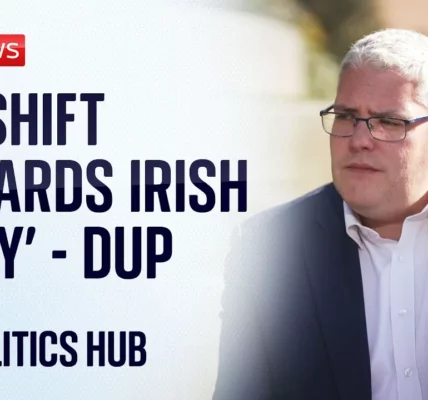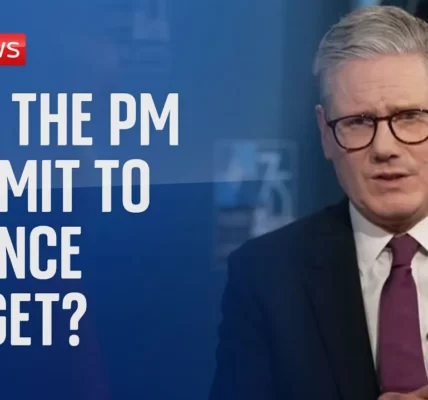Rishi Sunak’s Conservative Party Manifesto: Key Policies and Public Reaction

In a critical moment for the Conservative Party, Rishi Sunak unveiled his manifesto aimed at revitalizing support ahead of the upcoming election. With significant policy proposals and polling challenges, this article delves into the key elements of the manifesto, public sentiment, and the overarching political context.
Introduction
The launch of Rishi Sunak’s Conservative Party manifesto marks a pivotal moment in the lead-up to the general election. With the Conservatives trailing Labour by a notable margin in recent polls, Sunak’s plans include tax cuts, immigration reforms, and substantial investments in public services. This article provides a comprehensive overview of the manifesto, its projected impact, and the public’s reaction to these policies amid a shifting political landscape.
Key Policies Outlined in the Manifesto
Rishi Sunak’s manifesto is characterized by several ambitious promises aimed at addressing pressing issues within the UK. These key policies are designed to appeal to various voter demographics, particularly those feeling disillusioned with the current government.
Tax Cuts and Economic Strategy
One of the cornerstone proposals is a 2p cut to National Insurance, set to be implemented in 2027. Sunak also pledged to abolish National Insurance contributions for the self-employed by the end of the next Parliament. The overarching theme is a commitment to cutting taxes for workers, parents, and pensioners.
- 2p cut to National Insurance in 2027
- Abolition of National Insurance for self-employed individuals
- Annual boosts to NHS spending above inflation
Healthcare Commitments
Addressing concerns regarding the NHS, Sunak promised to recruit an additional 92,000 nurses and 28,000 doctors. These commitments are accompanied by a pledge to increase NHS funding, aiming to restore public trust in healthcare services.
Housing Initiatives
To tackle the housing crisis, the manifesto outlines a plan to build 1.6 million homes over the next five years. Moreover, Sunak has proposed the abolition of stamp duty for many first-time buyers, a move intended to stimulate the housing market and assist younger generations in achieving home ownership.
Immigration and National Service
On immigration, the Prime Minister reaffirmed his intention to implement the long-delayed Rwanda plan and establish an annual cap on immigration. Another controversial proposal is the reintroduction of national service for 18-year-olds, which has sparked mixed reactions from the public.
Polling Context and Public Reaction
The political landscape leading up to the election is fraught with challenges for the Conservative Party. Recent polls indicate that the party trails Labour by 20 points and faces stiff competition from Nigel Farage’s Reform Party.
Public Sentiment Towards the Conservative Party
Despite the manifesto’s ambitious promises, many voters express skepticism. A significant portion of the electorate feels frustrated with the current government, prompting questions about whether these new policies can effectively regain public trust.
- Polls show Labour leading by 20 points.
- Growing support for Reform Party, now just one point behind Conservatives.
- Public frustration with Conservative leadership and policies.
Comparative Analysis with Labour
As Labour gains trust on tax matters, Sunak’s claims of fiscal responsibility and tax cuts are met with skepticism. Critics argue that the Conservative record includes significant tax increases and a high tax burden, leading to doubts about the feasibility of the proposed tax cuts.
Analysis of Economic Viability
Economic analysts have scrutinized the Conservative manifesto, questioning the viability of proposed tax cuts amidst the existing fiscal challenges. The Institute for Fiscal Studies has indicated that despite the promise of tax cuts, the overall tax burden is likely to remain high.
Concerns Over Funding
Many experts note that the proposed cuts may not significantly alleviate the tax burden for the average taxpayer. Key points of concern include:
- Reliance on welfare reform for budgetary savings.
- Uncertain effectiveness of measures to combat tax avoidance.
- Projected tax increases in non-essential services.
Conclusion
Rishi Sunak’s Conservative Party manifesto presents a bold set of proposals aimed at revitalizing the party’s image and addressing key issues facing the electorate. However, with a significant polling deficit and public skepticism regarding the feasibility of these promises, the road ahead remains challenging for the Conservatives. As the election approaches, it is crucial for Sunak to not only deliver on his promises but also to convince voters of their viability. For more insights, stay tuned for upcoming analysis and coverage of the election campaign.
Call to Action: Engage with us on social media and share your thoughts on Rishi Sunak’s manifesto and its potential impact on the upcoming election.
“`




